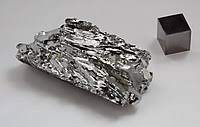Properties of molybdenum
Molybdenum is a chemical element with the symbol Mo and atomic number 42.

Physical properties of molybdenum
- Molybdenum has a silvery-white appearance and a high melting point of 2,623 degrees Celsius (4,753 degrees Fahrenheit), making it one of the refractory metals.
- It has a relatively high density of 10.22 grams per cubic centimeter.
- Molybdenum has a high tensile strength and low coefficient of thermal expansion, making it useful in applications requiring strength at high temperatures.
Chemical properties of molybdenum
- Molybdenum is highly resistant to corrosion, making it suitable for use in corrosive environments. It forms a protective oxide layer when exposed to air, which helps prevent further oxidation.
- It has a moderate reactivity and is not attacked by dilute acids or alkaline solutions. However, it can be dissolved in concentrated acids, such as nitric acid or aqua regia.
- Molybdenum can form compounds with a variety of oxidation states, ranging from -2 to +6. The most common oxidation states are +4, +5, and +6.
Mechanical properties
- Molybdenum has excellent mechanical properties, including high tensile strength, good ductility, and toughness. These properties make it suitable for applications requiring high strength and resistance to deformation.
- It has a low coefficient of thermal expansion, which means it expands and contracts less with temperature changes compared to many other metals.
- Molybdenum has a high modulus of elasticity, which is a measure of its stiffness or resistance to deformation under stress.
Applications
- Due to its high melting point and excellent strength at elevated temperatures, molybdenum is widely used in the production of high-temperature components such as heating elements, furnace parts, and rocket nozzles.
- It is an important alloying element in steel, where it improves strength, hardenability, and corrosion resistance. Stainless steels, tool steels, and high-speed steels often contain molybdenum.
- Molybdenum is used in the production of various chemical catalysts, such as those used in the petroleum industry for refining processes.
- It has applications in electronics and electrical devices, including as a material for contacts in power transistors and as a back contact in solar cells.
- Molybdenum-based alloys are used in the aerospace industry, particularly in aircraft and missile components that require high strength and heat resistance.
Overall, molybdenum’s unique combination of physical, chemical, and mechanical properties makes it a valuable material in various industrial and technological applications.